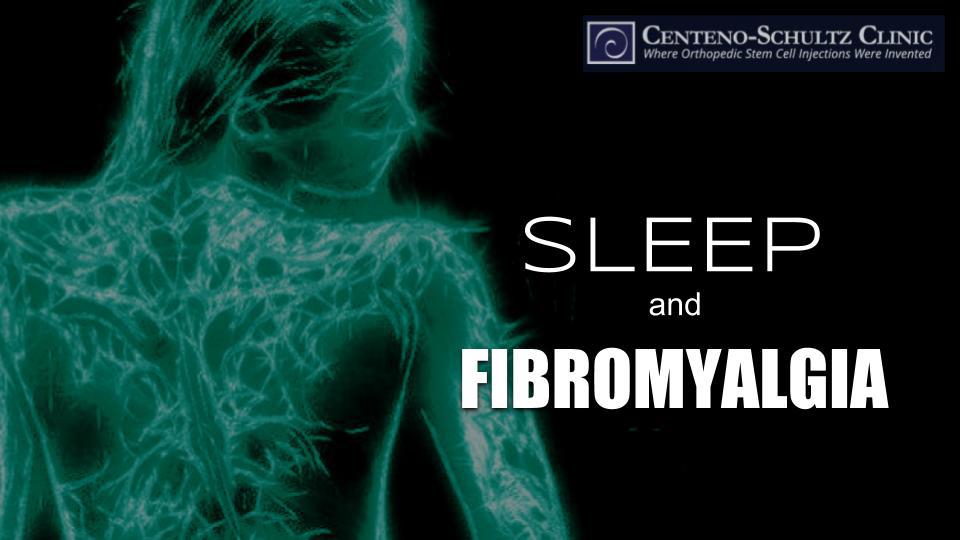Fibromyalgia is a generalized pain disorder, and we see and treat many patients in the clinic with this oftentimes quite debilitating disease. While our regenerative medicine techniques can be very helpful, one study also suggests there may be something else patients can do in addition to help relieve some of their symptoms: get more sleep!
What Is Fibromyalgia?
Fibromyalgia is a pain disorder, more common in women than men, in which patients experience pain everywhere and anywhere on their body. Some days it can be widespread, hurting all over, but other days it can be focused in specific parts of the body. Fibromyalgia can be extremely intense one day (where even gentle touch is unbearable) and very mild the next. Fibromyalgia affect not only physical but also mental function (e.g., stress, mood disorder, socialization issues, etc.). In short, fibromyalgia stands out from simple chronic pain in its severity and its ability to be very debilitating.
Fibromyalgia symptoms include extreme fatigue with generalized chronic muscle pain. Many patients experience anxiety and/or depression, sleeping disorders, brain fog, and so on. Many years ago, no one really understood what caused fibromyalgia or how best to treat it. Now, however, we know that overactive nerves are the culprit. This, along with our own experience in treating the disease using advanced regenerative medicine solutions, has helped us successfully help many fibromyalgia patients over the years. But, as with many issues when it comes to the human body, there are always things patients can do as well to help ease their fibromyalgia symptoms. In the case of fibromyalgia, getting more sleep, especially in conjunction with treatment, may be one way you can help reduce your pain.
Study Suggests More Sleep Will Ease Fibromyalgia Pain
In fibromyalgia the cortical gray matter in the brains of patients is known to atrophy, or shrink. One study investigated how sleep impacted the cortical thickness of the gray matter in patients with fibromyalgia. Eight weeks of sleep therapy resulted in slowing of cortical atrophy, meaning the cortical thickness shrunk away more slowly. In fact, in some of the fibromyalgia subjects, the thinning didn’t just slow down; it reversed! For comparison, those in the pain-therapy group actually experienced an increase in atrophy of the cortical gray matter. In other words, fibromyalgia patients who got more sleep experienced positive changes in the brain, while those who were taught behavioral therapy to address their pain experience negative changes in the brain.
How This Disqualifies the PNE Concept
Patients with fibromyalgia probably know better than most that you simply can’t ignore chronic pain to make it go away. Yet this is exactly what the concept known as pain neuroscience education (PNE) teaches: that sensitized nerves may be real, but the decision to acknowledge or perceive pain is a voluntary action. It’s an idea that’s been resurrected from the 1980s that was buried for good reason back then. Simply put, PNE folks teach that pain only exists because you haven’t learned how to deny it. So with proper education, you can learn to eliminate your pain simply by believing it doesn’t exist.
The recent study should put to rest any other minimal data suggesting this PNE concept works. When the researchers focused on the pain psychology in the study and tried to teach participants how not to be impacted by their pain, their cortical thinning worsened. When they taught participants how improve their sleep, their cortical thinning improved. In other words, a physical intervention—the sleep—improved their pain, while a psychological intervention—trying to talk participants out of pain—had no effect on their pain.
Getting more sleep, unfortunately, may be easier said than done in some fibromyalgia patients as sleep disorders are very common in patients with chronic pain. For some, you may first need to see your interventional orthopedic physician to have your pain treating using regenerative medicine. For others, you may be able to address your sleep issues by focusing on eliminating distractions (e.g., television, computer, smartphone use, etc.), adjusting your bed times to better correlate with natural circadian rhythms, or perhaps even considering a sleep study to make sure there isn’t another problem disrupting your sleep, such as sleep apnea.
Your goal should be eight to ten hours of sleep nightly, which even for the healthiest of us can be very challenging. However, for patients with fibromyalgia, an extra cup of coffee probably won’t do you much good; not getting good sleep may mean struggling all day with enhanced fibromyalgia symptoms.
